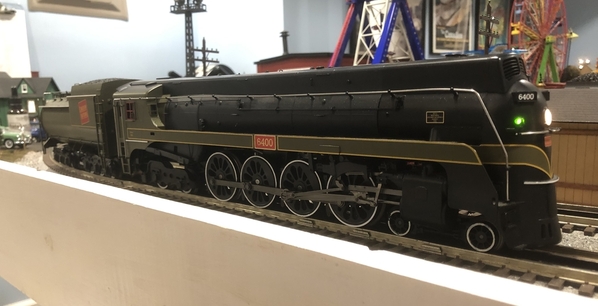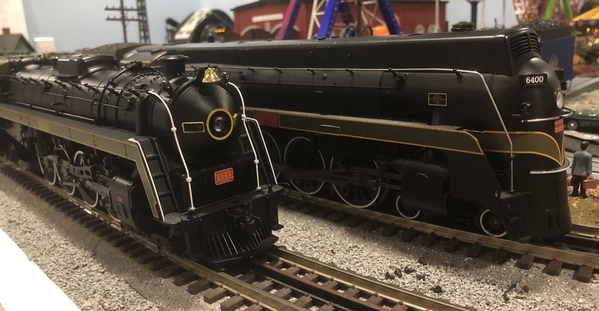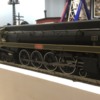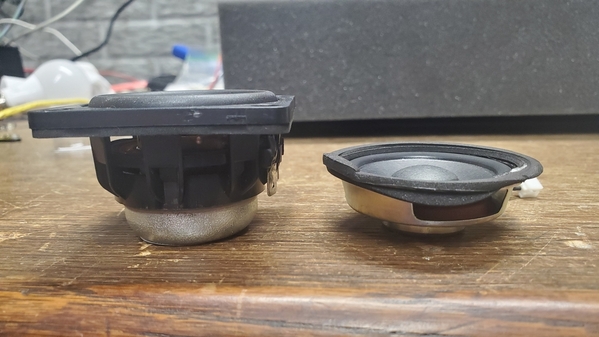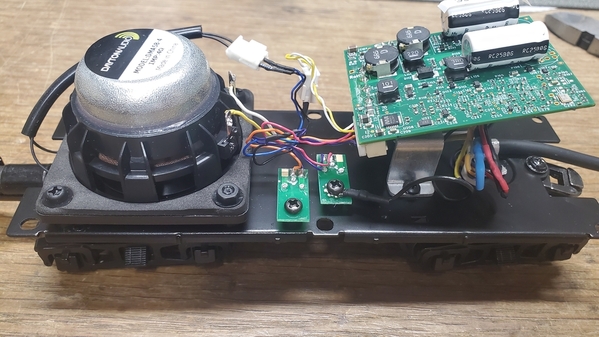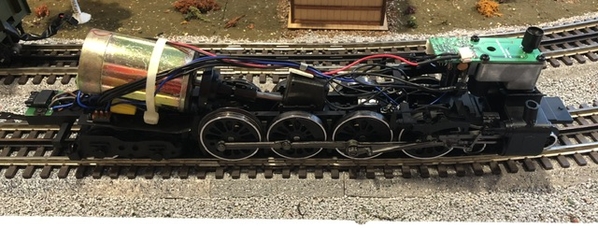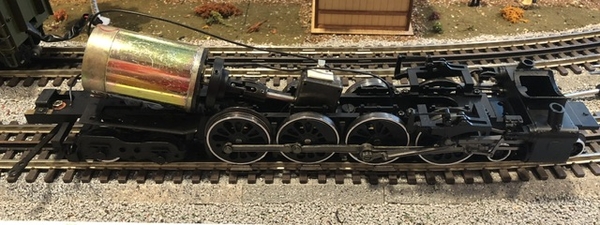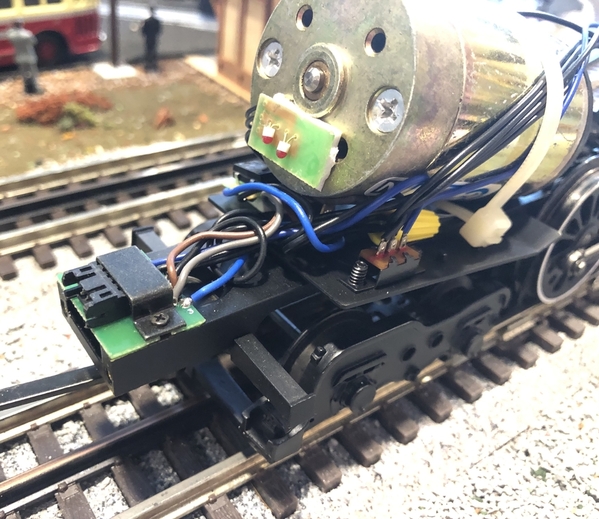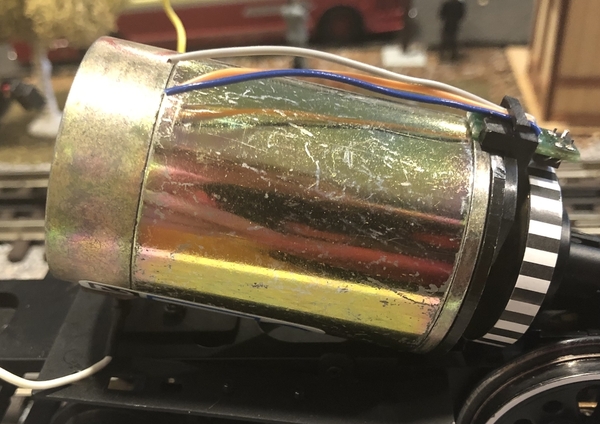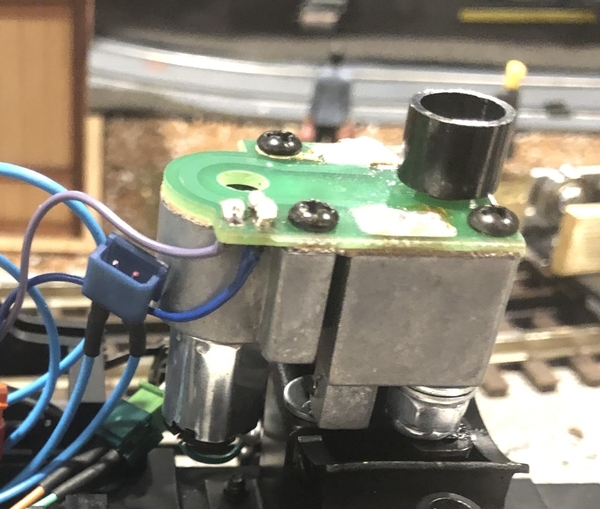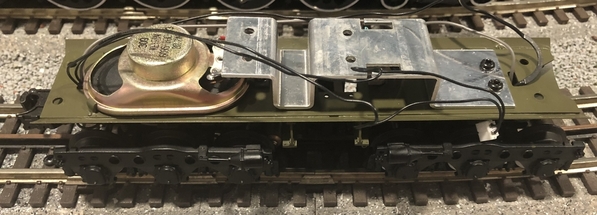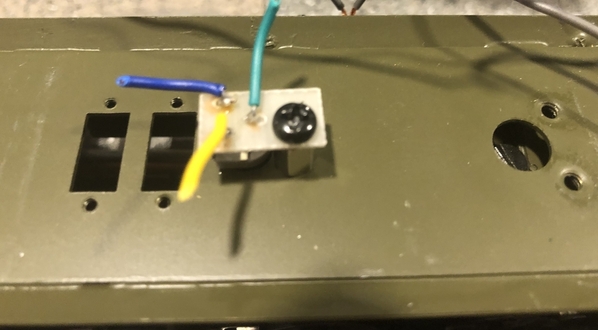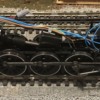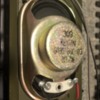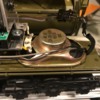It's time for another update!!
There has been significant progress.
First, I was able to wire up the volume pot and the speaker. The volume pot wasn't too difficult to wire once I figured out which colors were which. In this case, blue to blue, green to red, and yellow to grey.
Second I was able to wire the speaker up. MTH wasn't super clear in the instructions as to the polarity of the wires. In this case yellow is +, and white is -. That is not indicated anywhere in the manual.
The coupler proved to be more challenging than I had thought. Unfortunately, I had to separate the wires in order to fit them through the slot in the engine. If this was a larger frame, I would've drilled a bigger hole. However, as you can see below, I didn't have much space to work with. 
The tender shell has a bar that sits over the two holes. The mounting holes for the shell are in that bar. Thus, I was forced to use the pre-existing slit for the pickup and ground wires. Everything fit, except the connector. A little bit of wiring later, and it was fine!
Next came mounting the board. I was able to re-use the old board's mounting plate for the new board.
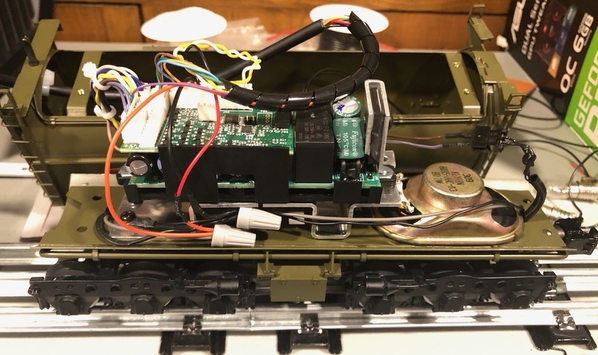
After some fun re-wiring (I had to separate the one large pin plug from the tether via the purple wire) I was able to set everything up for the test.
The test was successful. The engine made noise, did all it's fun test tones, growled like a diesel, and moved and smoked just fine. I did some wiring cleanup and cable management, and then test fit the tender shell. At present, I am still using the stock lighting, as otherwise I would've sealed the shell.
Next came installing the custom sound file I had made for this engine. Given it's size, I used the an MTH PS3 N&W 4-8-4 J-Class engine as my sound file base. Many of MTH's PS3 Northerns are oil burners. This particular Canadian National Northern (Confederation in Canadian terms,) is a coal burner. In my experience with making custom MTH sound files (the U1f one was an adventure,) I've discovered its often times easier to find a base file that requires minimal tweaking. A whistle swap here, a bell swap there, changing out the compressor sounds over there, a complete redo of the PFA sequence, and it was finished.
Installed it on the engine, and viola, the engine was essentially finished. It made a few successful circuits around my test loop, and then I noticed that the chuffs weren't in sync with the drivers.
Here comes the fun. Pulling up the information in ADPCM, the J Sound file was able to spit out all the relevant information regarding it's speed curve, driver revolution, etc.
Measuring the U4A, I discovered a few interesting things.
First, the drivers are 38.6mm in diameter.
Second, a full revolution of the driver is 17 revolutions of the flywheel.
ADPCM will allow me to edit values within the file. Will entering the relevant numbers sync the chuffs? Am I thinking of gear ratio wrong? The J I'm fairly certain does not have the same gear tower this engine has.
I could care less about accurate SMPH, as I run the speed using the eye test. This engine will also never double-head, so again, SMPH doesn't need to be accurate here.
